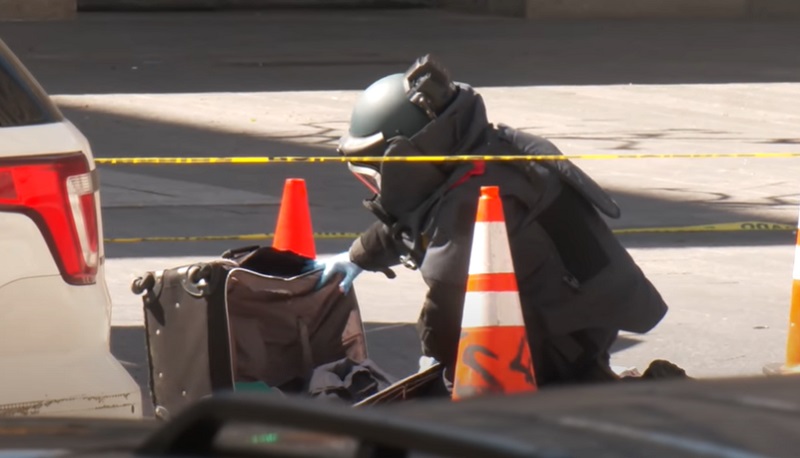
There are two things cops know about bombs. One is that they don’t look like an oversized red firecracker. The other is that they don’t come attached to a digital countdown clock.
The insidious truth about criminal explosive devices is that they can look like anything. Ted Kaczynski, better known as the infamous Unabomber, killed three and injured nearly two dozen others over twenty years. His creativity is a lesson in the ways that explosives can be hard to identify. One of his bombs was inside a book, another in a 3-ring binder, one was in brown paper wrapped with string, another disguised as a present, and yet another was packaged was left in a parking lot with a return address on it of the intended victim. When a well-meaning person found the package, they delivered it to the person at the return address, which was exactly what the devious Kacynski intended. In that case, the intended victim reported the package as suspicious and avoided injury, although a security officer to whom it was given was injured in the resulting explosion.
Explosive devices, like the notorious roadside IEDs (improvised explosive devices) of recent wars, are generally simple and constructed for death and injury. Placement of the devices is part of the bomber’s plan to increase the damage when detonated.
IEDs or HMEs (homemade explosives) can be set off by a wireless signal, a trip wire, by pressure, and even the old-fashioned lit fuse. They can complicate already tense situations by being planted in advance of other criminal activity. As a distraction device, they can create noise, fire, and damage to draw attention away from another crime in progress.
In one event this writer experienced, a campus police officer noticed a suspicious bottle of liquid in the parking lot near a football stadium. At the time, there had been a rash of dry ice bombs, which use dry ice placed in plastic bottles, used as pranks or back-yard projects. The device had caused hand and eye injuries. There is also always a risk of bleach or urine in devices to make any injuries worse. Because of the timing and placement of the device which was discovered just as a football game crowd was converging on the parking lot, the area was cordoned off, the fire department was called, and additional assisting law enforcement units arrived.
Was the device intended to injure spectators? Was it a distraction so that a location on the other side of the community could be robbed? Was the device designed to test the response time and capability of emergency services to help in planning a more substantial attack? Was there more than one device? The public was inconvenienced and there was criticism that law enforcement overreacted for such a device, but the potential consequences were too great to treat lightly.
A common misstep in responding to bomb threats in schools and businesses is immediate evacuation. The preferred protocol is to do an assessment of the threat and have those familiar with the premises do a visual search for suspicious devices. This is not because we can assume that a threat is not real, but because the dangers of evacuation are real. Most bombs that do get placed in schools or businesses are not such that major building collapse will occur, such as the case with the Murrah building at the site of the 1995 Oklahoma City bombing. Most devices are anti-personnel, meaning that they are designed to injure human bodies, not structures. Therefore, protecting in place will most likely provide the protection of walls in classrooms and offices even if a device were to go off.
Since people are often the target of HMEs, they might be placed in locations where evacuees from the building would go, such as in the parking lot or next to exits where they could more easily be placed than inside the building where they might be detected. What if the Murrah building had been evacuated into the parking lot where the massive explosion actually occurred?
Officers responding to drug houses, illegal outdoor marijuana grows, barricaded suspect situations, and school shootings can encounter explosive devices. The risk of so-called secondary explosions may be timed or remotely detonated after the initial emergency response for the specific purpose of harming first responders.
The Aurora, CO theatre shooter had his apartment booby-trapped to harm police officers searching his home after his inevitable arrest or death. In addition to the attack with firearms, the Columbine High School shooters used handheld thrown HMEs and had pre-planted propane bombs disguised in backpacks and gym bags to increase the lethality and impact of their attack.
The presence or suspected presence of explosive devices used by criminals adds complexity and danger to many crime scenes. It is another challenge to the skill and courage of our first responders.